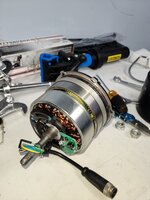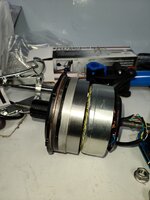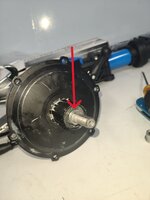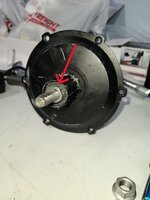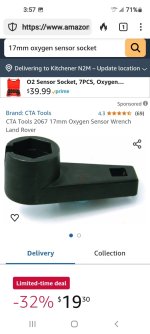Alec Crock
New Member
- Region
- USA
Hi everyone, I'm not new to repairing e-bike motors, but now I'm faced with an unusual Aventon Aventure motor design. I'm not really sure how to properly disassemble this motor to replace the Hall sensor. As you can see in the photo, there is a nut in the end of the motor axis, which, it seems to me, needs to be unscrewed. I've tried to do this with a regular wrench, but I haven't been successful. Perhaps a special tool is needed here. Is there anyone who has experience disassembling such motors? I would appreciate some advice in this situation. Thanks!
